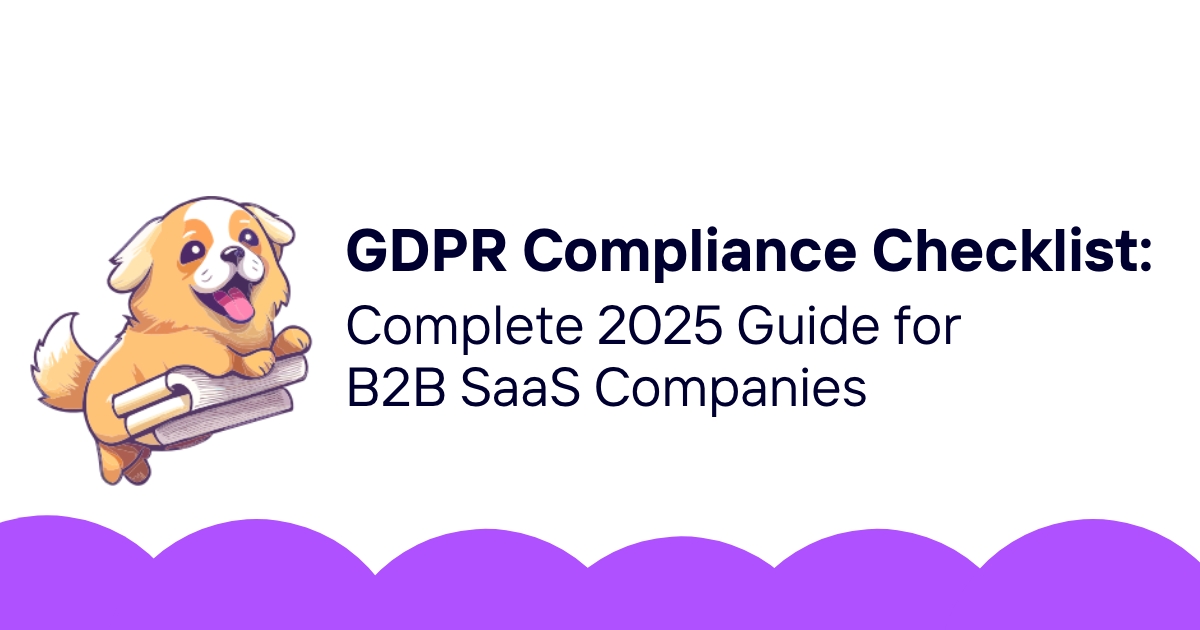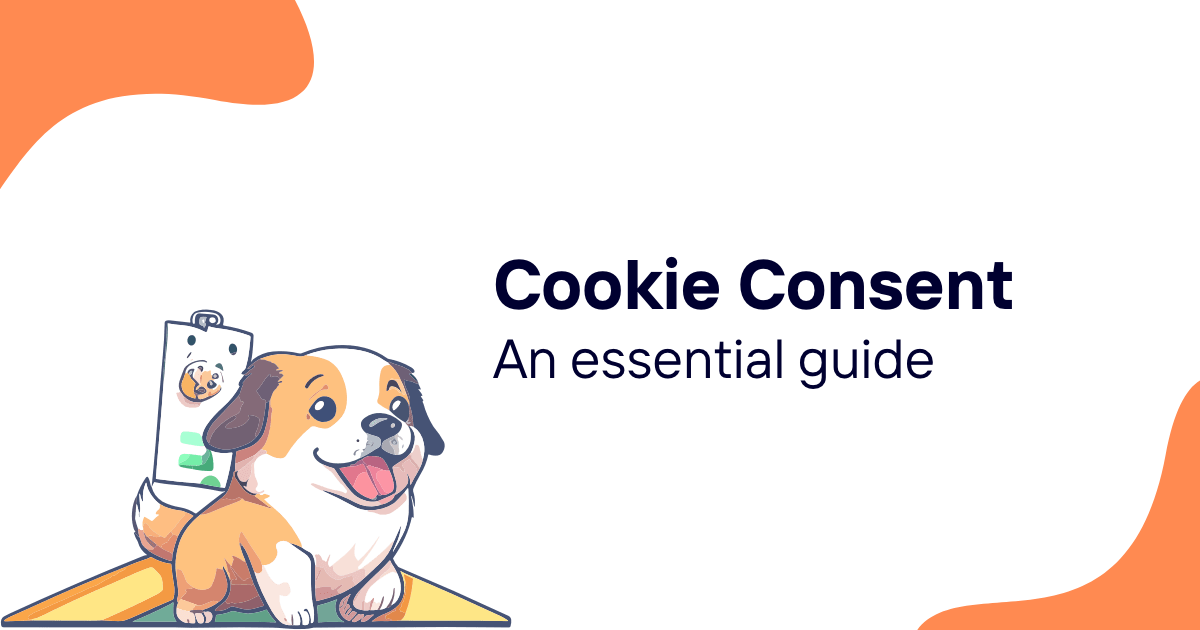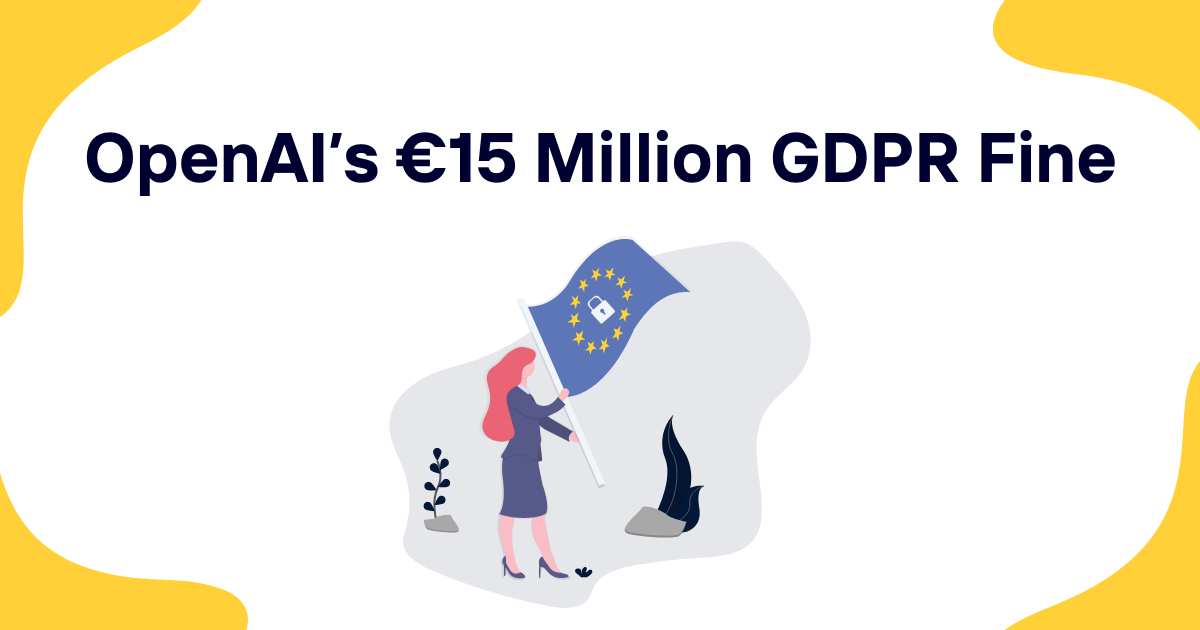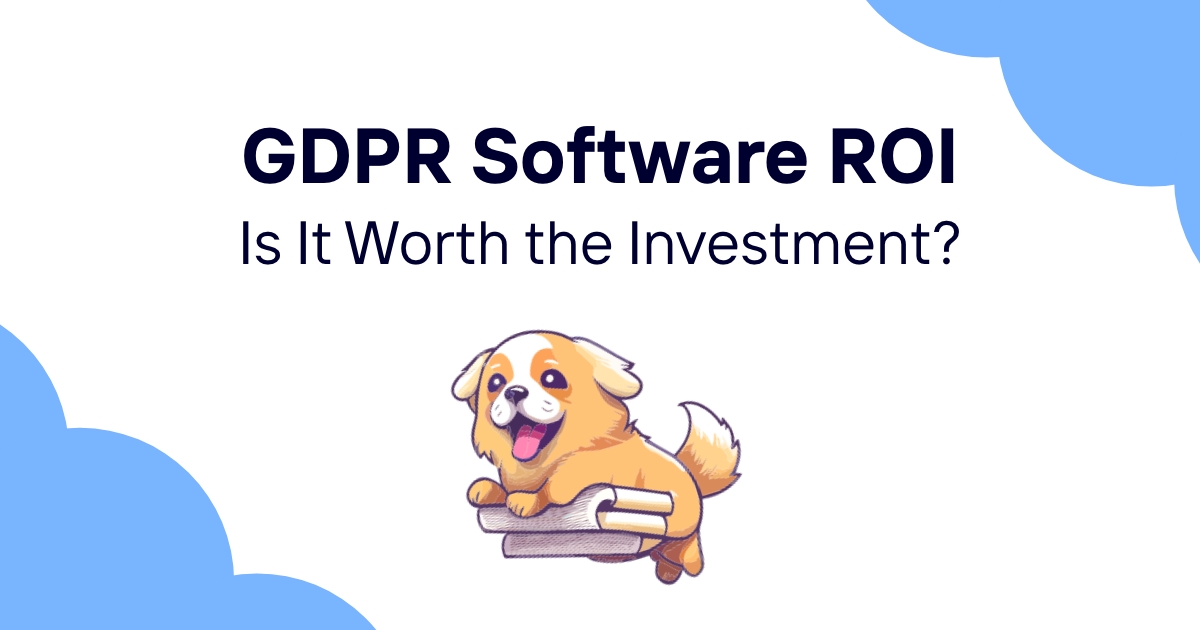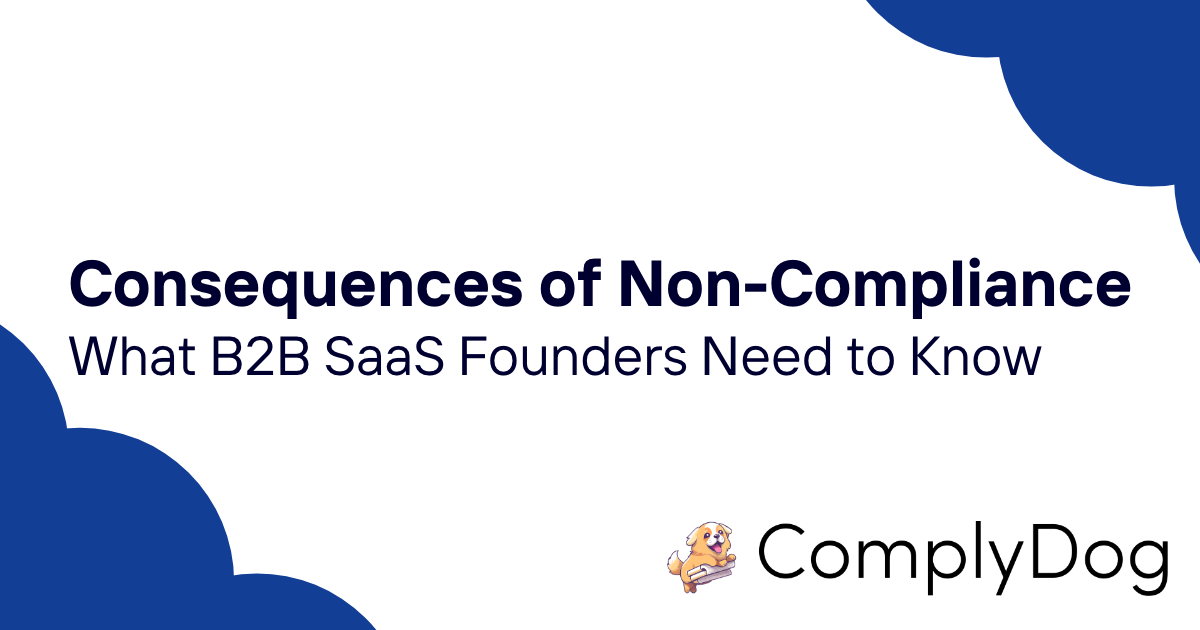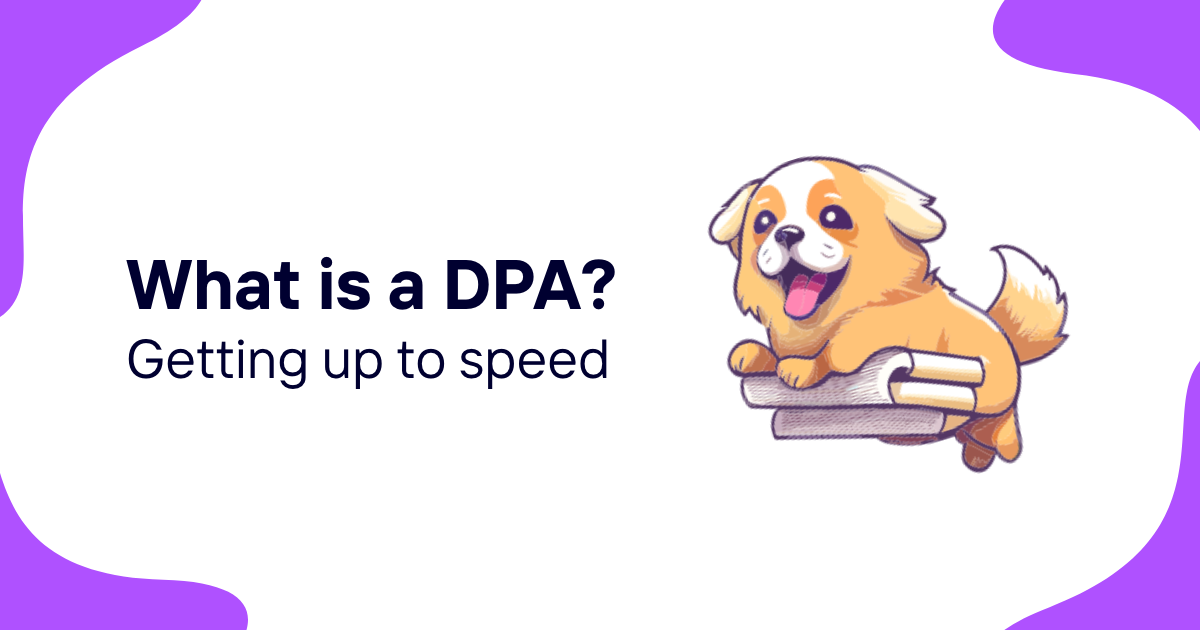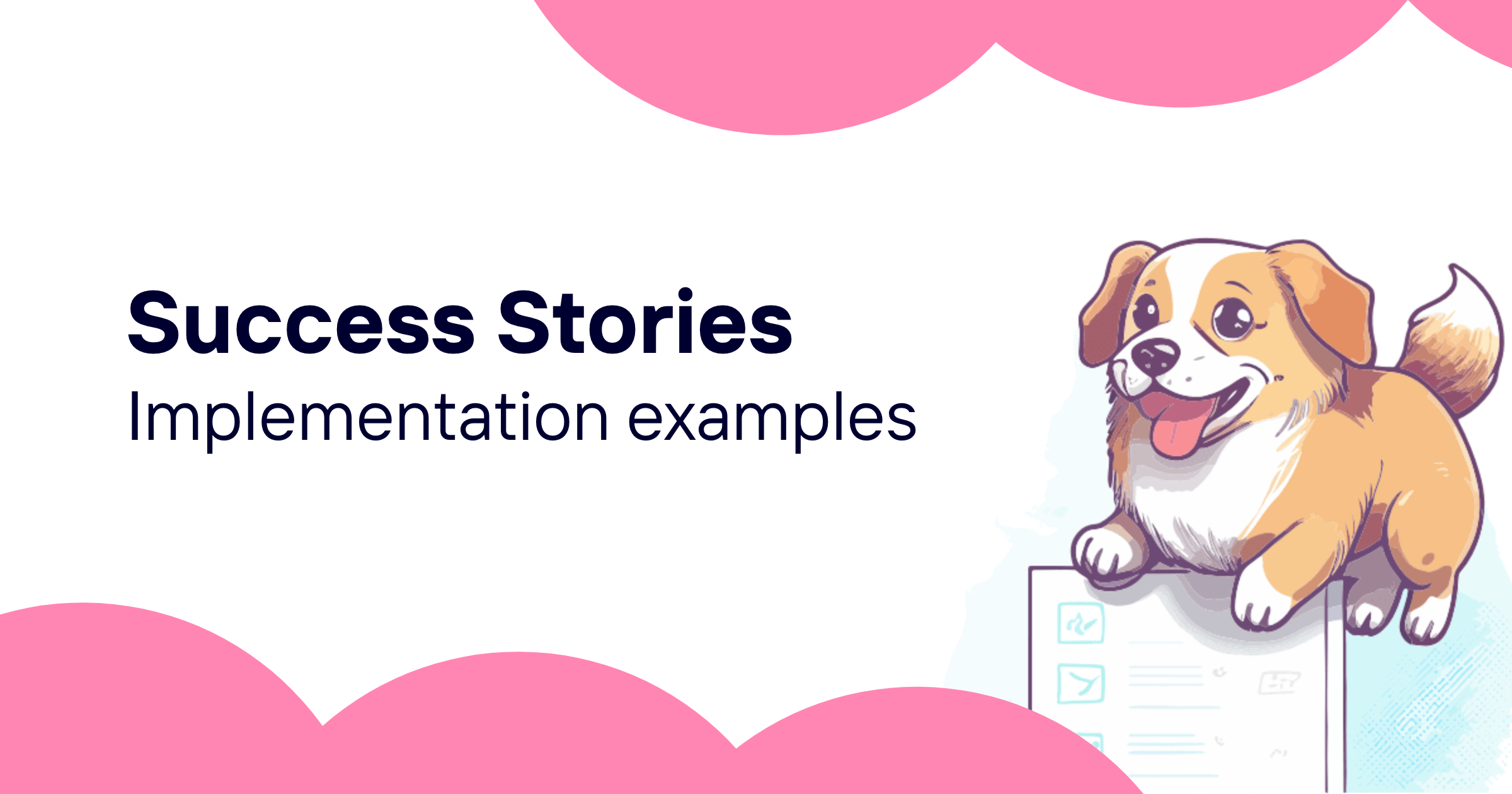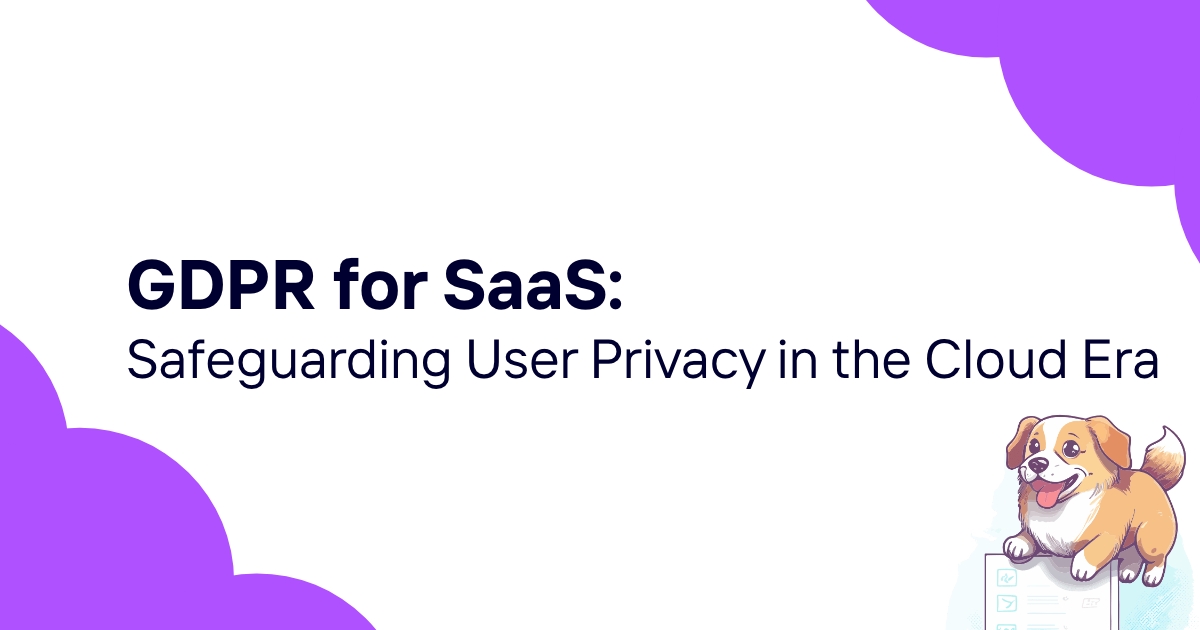The General Data Protection Regulation transformed how software companies handle personal data, creating complex compliance requirements that can overwhelm even experienced teams. For B2B SaaS companies, GDPR compliance isn't just about avoiding fines – it's about building customer trust and maintaining competitive advantage in privacy-conscious markets.
This comprehensive checklist provides step-by-step guidance for achieving complete GDPR compliance, with specific focus on challenges facing B2B SaaS companies. Whether you're preparing for initial compliance or auditing existing programs, this guide offers practical checkpoints and actionable recommendations.
GDPR Compliance Overview for SaaS Companies
B2B SaaS companies face unique GDPR challenges that differ significantly from traditional businesses or consumer-focused services. Understanding these specific requirements helps build effective compliance programs.
Why SaaS Companies Need Specialized GDPR Approaches
Software as a Service operations create complex data processing scenarios that require careful compliance consideration:
Multi-Tenant Architecture: SaaS platforms often process data for multiple customers within shared infrastructure, creating unique isolation and security requirements.
Continuous Data Processing: Unlike traditional businesses that handle discrete transactions, SaaS platforms continuously process personal data through ongoing service delivery.
Integration Ecosystems: Modern SaaS companies rely on numerous third-party services, APIs, and integrations that complicate data flow mapping and compliance management.
Global Customer Base: SaaS companies often serve customers across multiple jurisdictions, requiring compliance with various regulatory frameworks simultaneously.
GDPR Scope for B2B SaaS Operations
Understanding exactly when GDPR applies helps companies focus compliance efforts appropriately:
Customer Data Processing: When your SaaS platform processes personal data of your customers' end users, you typically act as a data processor with specific compliance obligations.
User Account Management: Personal data collected for user accounts, billing, and platform administration falls under data controller obligations.
Marketing and Sales: Lead generation, customer communications, and sales processes typically involve data controller responsibilities.
Support and Analytics: Customer support interactions and platform analytics often involve both controller and processor elements.
Legal Basis Categories for SaaS
Different SaaS activities require different legal bases under GDPR:
Contract Performance: Most core SaaS functionality relies on contract performance as the legal basis for processing customer data.
Legitimate Interests: Marketing communications, security monitoring, and platform improvements often use legitimate interests assessments.
Consent: Optional features, marketing preferences, and non-essential data collection typically require explicit consent mechanisms.
Legal Obligations: Compliance with financial regulations, security requirements, and government requests may create legal obligation bases.
Compliance Timeline and Milestones
Effective GDPR compliance requires systematic implementation with clear milestones:
Assessment Phase: 30-60 days for comprehensive data mapping, legal review, and gap analysis.
Implementation Phase: 90-180 days for policy development, system modifications, and staff training.
Testing and Validation: 30-60 days for compliance testing, process validation, and documentation review.
Ongoing Monitoring: Continuous monitoring, regular audits, and compliance updates as business evolves.
Pre-Implementation GDPR Assessment
Before implementing specific compliance measures, conduct a comprehensive assessment of your current data handling practices and compliance gaps.
Current State Data Audit
Understanding your existing data landscape provides the foundation for effective compliance planning:
□ Complete Data Inventory: Document all personal data your company collects, processes, and stores across all systems and business functions.
□ Processing Purpose Analysis: Identify and document the specific business purposes for each type of personal data processing activity.
□ Legal Basis Evaluation: Assess current legal bases for processing and identify areas where legal grounds need strengthening or clarification.
□ Data Flow Mapping: Create comprehensive maps showing how personal data moves through your systems, including third-party integrations and international transfers.
□ Retention Period Review: Evaluate current data retention practices against business necessity and regulatory requirements.
Risk Assessment Framework
Systematic risk evaluation helps prioritize compliance efforts and resource allocation:
□ High-Risk Processing Identification: Identify processing activities that pose elevated privacy risks and may require Data Protection Impact Assessments.
□ Breach Risk Analysis: Evaluate potential data breach scenarios and assess current security measures' effectiveness.
□ Vendor Risk Evaluation: Assess privacy risks associated with third-party services and data processing relationships.
□ Cross-Border Transfer Assessment: Review international data transfers and evaluate adequacy of current protection mechanisms.
□ Individual Rights Impact: Analyze how current systems support or hinder individuals' ability to exercise their GDPR rights.
Compliance Gap Analysis
Identifying specific areas where current practices fall short of GDPR requirements:
□ Policy Documentation Gaps: Compare existing privacy policies and procedures against GDPR requirements.
□ Technical Control Deficiencies: Identify security and privacy controls that need implementation or enhancement.
□ Process Improvement Needs: Evaluate business processes that require modification for GDPR compliance.
□ Training and Awareness Gaps: Assess staff knowledge and identify training needs for effective compliance implementation.
□ Governance Structure Review: Evaluate whether current organizational structure supports effective privacy governance.
Resource Planning and Budget Allocation
Effective compliance requires appropriate resource commitment and budget planning:
□ Personnel Requirements: Determine staffing needs for compliance implementation and ongoing management.
□ Technology Investment Planning: Identify software tools, security enhancements, and infrastructure upgrades needed for compliance.
□ External Support Assessment: Evaluate needs for legal counsel, compliance consultants, and specialized service providers.
□ Timeline and Milestone Planning: Develop realistic implementation schedules with clear deliverables and accountability measures.
□ Budget Approval and Allocation: Secure appropriate funding for compliance initiatives and ongoing operational requirements.
Data Mapping and Inventory Requirements
Comprehensive data mapping forms the foundation of effective GDPR compliance, providing visibility into what personal data you handle and how it flows through your organization.
Personal Data Discovery Process
Systematic data discovery ensures complete visibility into your personal data landscape:
□ Database Schema Analysis: Review all database structures to identify fields containing personal data, including hidden or derived data elements.
□ Application Data Flow Review: Map how personal data moves through your applications, including user interfaces, APIs, and background processes.
□ File System Scanning: Search file servers, cloud storage, and document repositories for personal data in unstructured formats.
□ Backup and Archive Assessment: Include backup systems, disaster recovery environments, and archived data in your inventory process.
□ Third-Party System Integration: Document personal data shared with or processed by external services and integration partners.
Data Classification and Categorization
Organizing personal data by type and sensitivity helps implement appropriate protection measures:
□ Direct Identifier Classification: Catalog obvious personal identifiers like names, email addresses, and account numbers.
□ Indirect Identifier Assessment: Identify data that becomes personally identifying when combined with other information.
□ Special Category Data Review: Locate and classify sensitive personal data requiring enhanced protection under GDPR.
□ Pseudonymized Data Evaluation: Assess whether data modification techniques effectively reduce identification risks.
□ Aggregated Data Analysis: Review aggregated datasets for potential re-identification risks and individual privacy impacts.
As detailed in our PII data protection guide, effective data classification requires understanding both obvious and subtle forms of personally identifiable information.
Processing Activity Documentation
GDPR requires detailed records of all personal data processing activities:
□ Processing Purpose Documentation: Create clear descriptions of why you process each type of personal data and the business benefits achieved.
□ Legal Basis Assignment: Identify and document the specific GDPR legal basis for each processing activity.
□ Data Subject Category Identification: Specify whose personal data you process, from customers to employees to website visitors.
□ Recipient and Sharing Documentation: List all parties who receive personal data, including processors, partners, and other third parties.
□ International Transfer Recording: Document cross-border data transfers and the legal mechanisms protecting transferred data.
Data Lifecycle Management
Understanding how personal data changes over time helps implement appropriate retention and deletion controls:
□ Data Collection Mapping: Document all points where personal data enters your systems, including forms, APIs, and integrations.
□ Processing Transformation Tracking: Map how personal data is modified, analyzed, or combined throughout its lifecycle.
□ Storage Location Inventory: Maintain current records of where different types of personal data are stored across your infrastructure.
□ Retention Schedule Development: Create clear timelines for how long different data types are retained based on business and legal requirements.
□ Deletion Process Documentation: Establish procedures for secure data deletion when retention periods expire or individuals request erasure.
Privacy Policy and Documentation Checklist
GDPR requires comprehensive documentation that clearly explains your data handling practices to individuals and demonstrates compliance to regulators.
Privacy Policy Content Requirements
Your privacy policy must include specific information elements required by GDPR:
□ Company Identity and Contact Information: Clearly identify your organization and provide multiple ways for individuals to contact you about privacy matters.
□ Data Protection Officer Details: If you have a DPO, include their contact information and role description.
□ Processing Purposes and Legal Bases: Explain why you process personal data and the legal grounds for each processing activity.
□ Data Categories and Sources: Describe what types of personal data you collect and where you obtain it.
□ Sharing and Recipient Information: List who receives personal data and explain why sharing is necessary.
□ International Transfer Disclosures: Explain any cross-border data transfers and the protections in place.
□ Retention Period Information: Specify how long you keep different types of personal data.
□ Individual Rights Explanation: Clearly describe all rights individuals have regarding their personal data.
□ Complaint and Contact Procedures: Provide clear instructions for exercising rights and filing complaints.
Data Processing Agreements
When acting as a data processor for customers, you need comprehensive processing agreements:
□ Processing Scope Definition: Clearly define what personal data you process and the specific processing activities authorized.
□ Processing Instruction Framework: Establish procedures for receiving and implementing customer instructions regarding data processing.
□ Confidentiality and Security Commitments: Include specific security measures and confidentiality obligations for processing personal data.
□ Sub-processor Management: Define procedures for engaging additional processors and obtaining customer approval.
□ Data Subject Rights Support: Specify how you'll assist customers in responding to individual rights requests.
□ Breach Notification Procedures: Establish clear timelines and procedures for notifying customers about security incidents.
□ Audit and Inspection Rights: Grant customers appropriate access for compliance auditing and verification.
□ Data Return and Deletion: Define procedures for returning or deleting personal data when processing relationships end.
Consent Management Documentation
When relying on consent as a legal basis, maintain comprehensive consent records:
□ Consent Collection Mechanisms: Document how you obtain consent, including the specific language and interface used.
□ Consent Scope Documentation: Clearly define what processing activities each consent covers and any limitations.
□ Withdrawal Procedures: Establish and document easy methods for individuals to withdraw consent.
□ Consent Record Keeping: Maintain detailed records of when and how consent was obtained from each individual.
□ Consent Refresh Processes: Implement procedures for periodically validating and refreshing consent when appropriate.
Internal Policy Documentation
Comprehensive internal policies guide staff behavior and demonstrate compliance commitment:
□ Data Handling Procedures: Detailed instructions for staff on appropriate personal data handling in various business contexts.
□ Access Control Policies: Clear rules about who can access personal data and under what circumstances.
□ Security Incident Response: Step-by-step procedures for detecting, responding to, and reporting data breaches.
□ Training and Awareness Programs: Documented programs for educating staff about GDPR requirements and company policies.
□ Vendor Management Procedures: Policies for selecting, contracting with, and monitoring third-party data processors.
Similar to requirements outlined in our complete EULA guide, privacy documentation must be clear, comprehensive, and legally compliant while remaining accessible to ordinary users.
Technical Safeguards Implementation
GDPR requires appropriate technical measures to protect personal data and support individual rights. For SaaS companies, these technical safeguards must scale with business growth while maintaining security effectiveness.
Data Security Controls
Implement comprehensive security measures that protect personal data throughout its lifecycle:
□ Encryption at Rest: Encrypt all stored personal data using strong encryption algorithms with proper key management procedures.
□ Encryption in Transit: Protect all personal data transmissions using secure protocols like TLS with current security standards.
□ Access Authentication: Implement multi-factor authentication for all systems containing personal data.
□ Authorization Controls: Use role-based access control systems that limit personal data access to authorized personnel with legitimate business needs.
□ Network Segmentation: Isolate systems containing personal data from other network segments to limit breach impact.
□ Security Monitoring: Deploy continuous monitoring systems that detect unauthorized access attempts and unusual data access patterns.
□ Vulnerability Management: Establish regular security assessments, penetration testing, and prompt patching of identified vulnerabilities.
□ Backup Security: Ensure backup systems maintain the same security standards as production environments.
Privacy by Design Implementation
Build privacy protection directly into your system architecture and business processes:
□ Data Minimization Controls: Implement technical controls that prevent collection of unnecessary personal data.
□ Purpose Limitation Enforcement: Use system controls to ensure personal data is only used for documented and authorized purposes.
□ Automated Retention Management: Deploy systems that automatically delete personal data when retention periods expire.
□ Pseudonymization Techniques: Implement data modification techniques that reduce identification risks while preserving data utility.
□ Privacy Impact Assessment Integration: Build privacy impact evaluation into system development and change management processes.
□ Default Privacy Settings: Configure systems to use privacy-protective settings by default rather than requiring user configuration.
□ Consent Management Systems: Implement technical systems that properly capture, track, and enforce user consent preferences.
□ Data Portability Features: Build capabilities that enable efficient data export in machine-readable formats for portability requests.
Individual Rights Support Systems
Technical systems must support individuals' ability to exercise their GDPR rights effectively:
□ Data Subject Identification: Implement systems that can accurately identify all personal data associated with specific individuals.
□ Access Request Processing: Build automated systems that can compile comprehensive personal data for access requests.
□ Rectification Capabilities: Ensure systems support accurate and timely correction of inaccurate personal data.
□ Erasure Implementation: Develop secure deletion capabilities that completely remove personal data from all system components.
□ Processing Restriction Controls: Implement technical measures that can limit processing of specific personal data when required.
□ Objection Processing: Build systems that can identify and halt processing based on legitimate objections from data subjects.
□ Automated Decision-Making Controls: If using automated decision-making, implement human review capabilities and explanation mechanisms.
□ Breach Detection Systems: Deploy monitoring that can quickly identify potential unauthorized access to personal data.
Integration and API Security
SaaS platforms' extensive integrations require special attention to data protection across system boundaries:
□ API Authentication: Secure all APIs that handle personal data with strong authentication and authorization mechanisms.
□ Data Transfer Logging: Maintain detailed logs of personal data transfers through APIs and integrations.
□ Third-Party Security Assessment: Evaluate security practices of all integration partners and service providers.
□ Data Loss Prevention: Implement technical controls that prevent unauthorized personal data exfiltration through APIs or integrations.
□ Integration Monitoring: Monitor all system integrations for unusual activity or potential security issues.
□ Secure Development Practices: Implement security-focused development practices for all systems handling personal data.
□ Change Management Controls: Establish procedures that assess privacy impacts of system changes and integration modifications.
□ Incident Response Integration: Ensure security incident response procedures cover all integrated systems and third-party services.
Data Subject Rights Management Setup
GDPR grants individuals specific rights regarding their personal data. SaaS companies must establish efficient systems for receiving, processing, and responding to these rights requests.
Access Request Processing
Individuals have the right to obtain copies of their personal data and information about how it's processed:
□ Request Reception Channels: Establish multiple ways for individuals to submit access requests, including web forms, email, and phone.
□ Identity Verification Procedures: Implement secure methods for verifying requester identity while avoiding excessive barriers.
□ Data Compilation Systems: Build automated systems that can locate and compile all personal data associated with specific individuals.
□ Response Format Standardization: Develop clear, user-friendly formats for presenting personal data and processing information.
□ Timeline Tracking: Implement monitoring systems that ensure access requests are processed within GDPR's one-month requirement.
□ Complex Request Handling: Establish procedures for handling requests that require timeline extensions or involve unusual circumstances.
□ Quality Assurance: Implement review processes that verify response accuracy and completeness before delivery.
□ Delivery Security: Use secure methods for delivering access request responses that protect personal data during transmission.
As explained in our DSAR complete guide, effective access request processing requires comprehensive understanding of data location and systematic response procedures.
Correction and Deletion Management
Individuals can request correction of inaccurate data and deletion of personal data under specific circumstances:
□ Rectification Request Processing: Establish efficient procedures for receiving and processing requests to correct inaccurate personal data.
□ Data Accuracy Verification: Implement processes for verifying data accuracy and determining appropriate corrections.
□ System Update Procedures: Ensure corrections are applied consistently across all systems containing the relevant personal data.
□ Third-Party Notification: Establish procedures for notifying relevant third parties when corrections affect shared data.
□ Erasure Request Evaluation: Develop frameworks for evaluating deletion requests against legal retention requirements and business necessity.
□ Secure Deletion Implementation: Implement technical procedures that ensure complete removal of personal data from all system components.
□ Deletion Verification: Establish processes for verifying that requested data has been completely removed from all relevant systems.
□ Documentation Requirements: Maintain appropriate records of correction and deletion activities for compliance verification.
Consent and Objection Management
Handle consent withdrawal and processing objections effectively:
□ Consent Withdrawal Mechanisms: Provide easy, accessible methods for individuals to withdraw consent for specific processing activities.
□ Consent Impact Assessment: Implement systems that identify all processing activities affected by consent withdrawal.
□ Automated Consent Enforcement: Build technical controls that automatically halt processing when consent is withdrawn.
□ Objection Processing Framework: Establish procedures for evaluating and responding to objections based on legitimate interests processing.
□ Marketing Opt-Out Systems: Implement comprehensive systems for managing marketing communication preferences and opt-out requests.
□ Preference Center Management: Provide user-friendly interfaces for individuals to manage their privacy preferences and consent choices.
□ Legal Basis Documentation: Maintain clear records of the legal basis for each type of processing to support objection evaluations.
□ Response Communication: Develop clear communication templates that explain how you've addressed consent and objection requests.
Portability and Restriction Rights
Support individuals' rights to obtain portable data copies and restrict certain processing activities:
□ Data Portability Assessment: Identify which personal data qualifies for portability rights based on legal basis and processing context.
□ Portable Format Development: Create machine-readable export formats that enable easy data transfer to other services.
□ Export System Implementation: Build automated systems that can efficiently generate portable data exports for qualified requests.
□ Processing Restriction Capabilities: Implement technical controls that can limit specific processing activities while maintaining data storage.
□ Restriction Impact Analysis: Develop procedures for evaluating how processing restrictions affect business operations and service delivery.
□ Temporary Processing Suspension: Establish systems that can temporarily halt processing pending resolution of accuracy disputes or objection evaluations.
□ Stakeholder Communication: Create procedures for notifying relevant parties when processing restrictions affect shared data or business relationships.
□ Restriction Documentation: Maintain detailed records of processing restrictions and their business impacts for compliance verification.
Vendor and Third-Party Assessment
SaaS companies typically rely on numerous third-party services, creating complex vendor management requirements under GDPR. Comprehensive vendor assessment ensures all data processing relationships meet regulatory standards.
Due Diligence Framework
Establish systematic approaches for evaluating potential vendors' privacy and security practices:
□ Privacy Policy Review: Analyze potential vendors' privacy policies for GDPR compliance and compatibility with your processing needs.
□ Security Assessment: Evaluate vendors' technical and organizational security measures through questionnaires, audits, or certifications.
□ Data Processing Scope: Clearly define what personal data vendors will access and the specific processing activities they'll perform.
□ Legal Compliance Verification: Confirm vendors' compliance with applicable privacy regulations and industry standards.
□ International Transfer Evaluation: Assess whether vendor relationships involve cross-border data transfers requiring special protections.
□ Incident Response Capabilities: Evaluate vendors' security incident response procedures and notification requirements.
□ Business Continuity Planning: Review vendors' disaster recovery and business continuity plans that affect personal data protection.
□ Financial Stability Assessment: Consider vendors' financial stability and its potential impact on data security and availability.
Contract and Agreement Management
Ensure all vendor relationships include appropriate contractual protections for personal data:
□ Data Processing Agreement Development: Create comprehensive agreements that define processing scope, responsibilities, and compliance requirements.
□ Security Requirement Specification: Include specific technical and organizational security measures in vendor contracts.
□ Audit Rights Inclusion: Negotiate appropriate rights to audit vendor compliance and security practices.
□ Breach Notification Requirements: Establish clear timelines and procedures for vendors to report security incidents.
□ Data Return and Deletion Clauses: Include specific requirements for data handling when vendor relationships end.
□ Sub-processor Management: Define procedures for vendor engagement of additional processors and required approvals.
□ Liability and Indemnification: Establish appropriate liability allocation and indemnification for privacy violations.
□ Termination Procedures: Define clear processes for ending vendor relationships while protecting personal data.
Ongoing Vendor Monitoring
Maintain continuous oversight of vendor compliance and performance:
□ Regular Compliance Reviews: Conduct periodic assessments of vendor privacy and security practices.
□ Performance Monitoring: Track vendor performance against contractual commitments and service level agreements.
□ Security Update Requirements: Ensure vendors maintain current security measures and promptly address identified vulnerabilities.
□ Incident Response Coordination: Establish procedures for coordinating incident response activities with vendors.
□ Contract Review and Updates: Regularly review and update vendor contracts to address changing business needs and regulatory requirements.
□ Alternative Vendor Planning: Maintain awareness of alternative vendors to reduce dependency risks and enable rapid transitions if necessary.
□ Vendor Communication Management: Establish regular communication channels for addressing compliance issues and operational concerns.
□ Documentation and Record Keeping: Maintain comprehensive records of vendor assessments, communications, and compliance activities.
Sub-processor Management
When vendors engage additional processors, maintain appropriate oversight and control:
□ Sub-processor Approval Processes: Establish clear procedures for reviewing and approving vendor use of additional processors.
□ Sub-processor Assessment: Evaluate sub-processors' privacy and security practices using similar criteria as primary vendors.
□ Contract Flow-Down Requirements: Ensure privacy and security requirements apply to all levels of the processing chain.
□ Monitoring and Oversight: Implement procedures for monitoring sub-processor compliance and performance.
□ Change Notification Requirements: Require vendors to notify you of changes in sub-processor relationships.
□ Direct Relationship Evaluation: Consider establishing direct contractual relationships with critical sub-processors.
□ Liability Chain Management: Understand liability implications of sub-processor relationships and ensure appropriate protections.
□ Exit Planning: Develop procedures for handling sub-processor relationship changes or terminations.
Ongoing Compliance Monitoring
GDPR compliance isn't a one-time project – it requires continuous monitoring, assessment, and improvement to address changing business needs and regulatory requirements.
Regular Compliance Audits
Systematic auditing helps identify compliance gaps and improvement opportunities:
□ Quarterly Compliance Reviews: Conduct regular assessments of key compliance areas including data handling, security controls, and individual rights processing.
□ Annual Comprehensive Audits: Perform detailed annual reviews that examine all aspects of your GDPR compliance program.
□ Process Effectiveness Evaluation: Assess whether current compliance procedures work effectively in practice and achieve intended outcomes.
□ Documentation Currency Review: Verify that privacy policies, procedures, and records accurately reflect current business practices.
□ Training Effectiveness Assessment: Evaluate whether staff training programs successfully communicate privacy requirements and expectations.
□ Vendor Compliance Verification: Regularly audit vendor compliance with contractual privacy and security requirements.
□ Technical Control Testing: Conduct periodic testing of security controls and privacy protection measures.
□ Incident Response Preparedness: Test incident response procedures through simulations and tabletop exercises.
Performance Metrics and KPIs
Establish measurable indicators that track compliance program effectiveness:
□ Data Subject Request Processing Times: Monitor average response times for access requests, deletion requests, and other individual rights requests.
□ Security Incident Frequency: Track the number and severity of security incidents affecting personal data.
□ Training Completion Rates: Monitor staff completion of required privacy training programs.
□ Vendor Compliance Scores: Develop scoring systems that assess vendor privacy and security performance.
□ Data Breach Response Times: Measure how quickly you detect, contain, and report data breaches.
□ Policy Update Frequency: Track how often privacy policies and procedures require updates to address business changes.
□ Complaint Resolution Times: Monitor how quickly you resolve privacy complaints and data subject concerns.
□ Compliance Cost Management: Track the costs associated with compliance activities and identify efficiency opportunities.
Regulatory Change Management
Stay current with evolving privacy regulations and enforcement guidance:
□ Regulatory Monitoring Systems: Establish processes for tracking changes in privacy laws, enforcement actions, and regulatory guidance.
□ Impact Assessment Procedures: Develop frameworks for evaluating how regulatory changes affect your compliance obligations.
□ Update Implementation Planning: Create systematic approaches for implementing compliance program updates based on regulatory changes.
□ Legal Counsel Coordination: Maintain relationships with privacy lawyers who can provide guidance on complex regulatory issues.
□ Industry Participation: Engage with industry associations and privacy organizations to stay informed about best practices and emerging issues.
□ Cross-Jurisdictional Coordination: Monitor privacy law developments in all jurisdictions where you operate or serve customers.
□ Documentation Update Procedures: Establish efficient processes for updating policies and procedures when regulations change.
□ Staff Communication Systems: Develop methods for quickly communicating regulatory changes and compliance updates to relevant staff.
Continuous Improvement Framework
Build learning and improvement into your compliance program:
□ Lesson Learned Integration: Systematically capture and apply lessons from compliance incidents, audits, and operational experience.
□ Best Practice Research: Regularly research and evaluate industry best practices for privacy compliance and data protection.
□ Technology Update Assessment: Evaluate new technologies and tools that could improve compliance efficiency and effectiveness.
□ Process Optimization: Continuously look for opportunities to streamline compliance processes while maintaining effectiveness.
□ Stakeholder Feedback Integration: Collect and analyze feedback from customers, employees, and other stakeholders about your privacy practices.
□ Competitive Analysis: Monitor how competitors and industry leaders approach privacy compliance and data protection.
□ Innovation Integration: Ensure new business initiatives and technological innovations include appropriate privacy considerations from the beginning.
□ Performance Benchmarking: Compare your compliance performance against industry standards and leading practices.
GDPR Compliance Tools and Automation
Modern GDPR compliance requires sophisticated tools that can handle the complexity of contemporary data environments while reducing manual effort and human error.
Comprehensive Compliance Platforms
Integrated platforms offer significant advantages over managing compliance through multiple disconnected tools:
□ Unified Data Discovery: Tools that automatically locate and classify personal data across all business systems and storage locations.
□ Automated Data Mapping: Systems that maintain current records of data flows, processing activities, and third-party relationships.
□ Rights Request Management: Integrated platforms for receiving, processing, and responding to all types of data subject requests.
□ Consent Management Integration: Systems that capture, track, and enforce user consent across all business applications and touchpoints.
□ Vendor Assessment Tools: Platforms that streamline vendor privacy assessments and ongoing compliance monitoring.
□ Incident Response Coordination: Integrated tools for managing data breach detection, response, and regulatory notification.
□ Compliance Monitoring Dashboards: Real-time visibility into compliance status, performance metrics, and emerging risks.
□ Documentation Management: Centralized systems for maintaining privacy policies, procedures, and compliance records.
Implementation and Integration Benefits
Effective compliance tools integrate seamlessly with existing business systems:
□ Reduced Manual Effort: Automation that eliminates repetitive compliance tasks and reduces reliance on manual processes.
□ Improved Accuracy: Automated systems that reduce human error in data discovery, rights request processing, and compliance reporting.
□ Enhanced Efficiency: Streamlined workflows that enable faster response to data subject requests and compliance requirements.
□ Better Visibility: Comprehensive dashboards that provide real-time insight into compliance status and potential issues.
□ Scalable Operations: Tools that grow with your business and adapt to changing compliance requirements.
□ Cost Management: Platforms that reduce the total cost of compliance through automation and operational efficiency.
□ Risk Reduction: Integrated tools that identify and mitigate compliance risks before they become serious problems.
□ Competitive Advantage: Efficient compliance that enables faster business growth and stronger customer relationships.
Building comprehensive GDPR compliance requires more than just checking boxes – it requires integrated approaches that treat privacy protection as a fundamental business capability rather than a regulatory burden.
For B2B SaaS companies looking to transform compliance from a cost center into a competitive advantage, comprehensive platforms offer significant benefits over manual processes and disconnected point solutions. These integrated approaches ensure consistent compliance while reducing operational overhead and enabling business growth.
Ready to implement comprehensive GDPR compliance that scales with your business growth? Use ComplyDog and get your complete compliance framework operational immediately, with automated data subject request processing, integrated privacy documentation, and continuous compliance monitoring.
